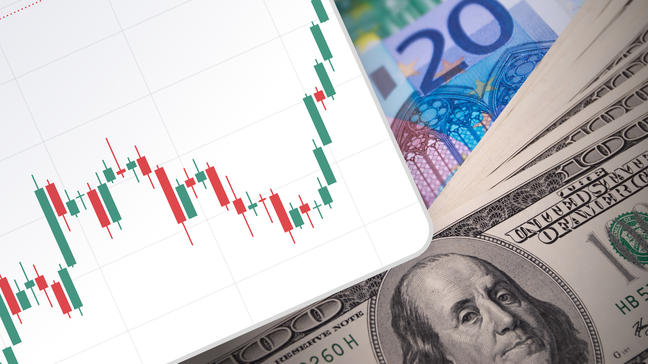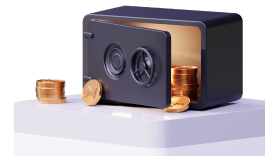The risk complex edges higher early Thursday, extending the early week’s cautious optimism, as traders place bets on the major central bank’s rate cuts. It’s worth noting, however, that the odds of witnessing monetary policy changes in March have been mostly down but the traders expect the central bankers’ moves in May and hence test the respective currency, mainly the US Dollar. Additionally, early signals suggesting a softness in the US economics and challenges for the Federal Reserve’s (Fed) higher for longer rate bias also weigh on the Greenback and allow the riskier assets to print mild gains.
With this, the US Dollar Index (DXY) licks its wounds after a two-day losing streak while the EURUSD rises for the third consecutive day. On the same line, GBPUSD, AUDUSD and NZDUSD print minor gains while the USDCAD drops for the third consecutive day while cheering the softer USD and upbeat prices of Canada’s main export item, i.e. Crude Oil.
On the contrary, USDJPY extends the previous day’s rebound from the weekly low while Gold price stays depressed for the second day in a row.
It should be noted that the BTCUSD remains mildly bid at the highest level in a month amid optimism surrounding Bitcoin matrices but the ETHUSD retreats from a two-week high as traders appear cautious about the Ethereum upgrade.
Following are the latest moves of the key assets:
- Brent oil rises for the fourth consecutive day to refresh the weekly high near $80.00.
- Gold price seesaws around $2,035 after retreating from the weekly top the previous day.
- USD Index makes rounds to 104.00 after falling in the last two consecutive days.
- Wall Street closed with minor gains but the Asia-Pacific stocks remain dicey. That said, shares in Europe and the UK traded mixed during the initial hour of trading.
- BTCUSD refreshes the monthly high near $44,800 before easing to $44,500 by the press time while ETHUSD posts minor losses after a three-day uptrend to near $2,420 as we write.
Rejection of imminent rate cuts test market’s optimism amid mixed clues…
Traders remain convinced that the major central banks are not yet ready to announce the previously expected rate cuts in March. However, the growing odds to favor such a move in May seemed to have triggered the risk-on mood, especially amid an absence of major negatives from the geopolitical front and due to China’s slightly positive inflation data, not to forget stimulus clues from Beijing.
Federal Reserve Bank of Minneapolis President Neel Kashkari (a non-voting FOMC member in 2024) trimmed his hawkish bias while citing the need for 2-3 rate cuts. The policymaker, however, also said, “If the labor market continues to be strong, we can dial back the policy rate quite slowly.”
Meanwhile, Fed Governor Adriana Kugler signaled that the US central bank’s job on inflation is not done yet while adding that the policy stance is restrictive. Also, Federal Reserve Bank of Boston President Susan Collins teased the rate cuts during late 2024 while adding that the possible future interest rate might be higher than pre-pandemic levels. Moreover, Richmond Fed President Thomas Barkin said that it makes sense to be patient on rate cuts.
In that direction, the Federal Reserve Bank of Atlanta’s Wage growth tracker dropped to the lowest level since December 2021 while printing the 5.0% mark versus 5.2% prior. Also, the Atlanta Fed’s GDPNow model forecasts Q1 2024 GDP growth to fall to 3.4% versus 4.2% expected a week earlier. Furthermore, the US Consumer Credit also grew much slower than expected by posting a growth of $1.56 billion for December versus the market’s estimations of $16.0 billion.
That said, the US Congressional Budget Office (CBO) released a report containing a comprehensive “Fiscal & Economic Outlook” suggesting a gradual fall in the inflation and growth numbers in the years to come. The report also suggests an increase in the Unemployment Rate and the fiscal deficit.
On a different page, the European Central Bank (ECB) appears less dovish than expected, especially amid the recently flashed all-time high of the DAX equity index. Also, hawkish comments from ECB Governing Council member Isabelle Schnabel offered additional strength to the concerns supporting a delay in the ECB rate cuts and favored the EURUSD bulls.
Elsewhere, the US Energy Information Administration (EIA) released its “Short-term Energy Outlook” earlier in the week and suggested a slower US Oil production in 2024. The same joins the downbeat US Dollar in favoring the black gold prices. However, a better-than-forecast build in the US weekly Oil inventories challenges the energy buyers.
While the Fed and ECB officials were defending the hawkish stand, the Bank of Japan (BoJ) Executive Director Shimizu pushed back concerns suggesting an end to the BoJ’s accommodative conditions even if the interest rates could be elevated from the negative region. Furthermore, BoJ Deputy Governor Uchida mentioned that they would like to maintain a stable, accommodative monetary environment. However, Japan’s top-tier commercial banks are sitting on a pile of record Yen funds and have been hesitating to invest of late, which in turn suggests the Asian major’s nearness to the exit from the ultra-easy monetary policy. Amid these plays, the USDJPY remains on the front foot while tracing the firmer yields and the BoJ officials’ defense of the easy-money policy.
It should be noted that the GBPUSD lacks recovery momentum as the UK’s wage growth, per the Recruitment and Employment Confederation (REC), eases to the lowest rate in three years. With this in mind, the REC also requests the Bank of England (BoE) to ease the monetary policy, which in turn joins the recently downbeat British data to prod the Cable pair buyers.
- Strong buy: USDCAD, USDJPY
- Strong sell: Crude Oil, US Dollar, GBPUSD
- Buy: BTCUSD, ETHUSD, Nasdaq, Gold
- Sell: DAX, FTSE 100, BTCUSD, AUDUSD, EURUSD
US Jobless Claims, central bankers in focus…
The ongoing rate cut concerns and the risk news may keep the optimists on the table, which in turn can weigh on the US Dollar. However, the presence of the US Weekly Jobless Claims, monthly Wholesale Inventories and speeches from the central bank officials from the US, Europe and the UK will allow the Greenback sellers to take a breather, especially when the Treasury bond yields across the board edged higher. Additionally, the geopolitical tensions in the Middle East keep challenging the prices of Oil and push traders toward the USD due to its haven status. However, China’s debt woes and the upcoming Lunar New Year holiday season test the Gold buyers despite the precious metal’s traditional risk-safety allure.
May the trading luck be with you!




